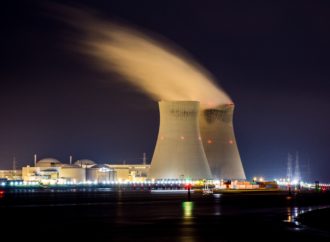May state legislative applications limit an Article V convention? Subject, yes; specific language, probably not
- September 12, 2013

There’s an arms race afoot in energy production, and the U.S. is at risk of falling behind. No longer are we able to rest on our laurels as the world’s number one producer of oil and gas. Thanks to global commitments to pursue a “clean energy transition”, countries like China have been able to establish
READ MORE
Much of the conversation surrounding energy policy in Colorado these days has to do primarily with the emissions currently being produced and ways to continue reducing said emissions. The arguments over the role of various energy sources in getting to a decarbonized future are familiar at this point. But there has been comparatively little discussion
READ MOREEnergy Policy Center analyst Michael Sandoval offers testimony on behalf of Senate Bill 44 before the House Committee on State, Veterans, and Military Affairs on March 2, 2015. Testimony as prepared: Testimony on behalf of SB 44 CONCERNING A REDUCTION IN COLORADO’S RENEWABLE ENERGY STANDARD March 2, 2015 State, Veterans, and Military Affairs Committee Mr(s).
READ MOREEnvironmentalists advocate wind power as one of the main alternatives to fossil fuels, claiming that it is both cost effective and low in carbon emissions. This study seeks to evaluate these claims.
Existing estimates of the life-cycle emissions from wind turbines range from 5 to 100 grams of CO2 equivalent per kilowatt hour of electricity produced. This very wide range is explained by differ- ences in what was included in each analysis, and the proportion of electricity generated by wind. The low CO2 emissions estimates are only possible at low levels of installed wind capacity, and even then they typically ignore the large proportion of associated emissions that come from the need for backup power sources (“spinning reserves”).
Wind blows at speeds that vary considerably, leading to wide variations in power output at different times and in different locations. To address this variability, power supply companies must install backup capacity, which kicks in when demand exceeds supply from the wind turbines; failure to do so will adversely affect grid reliability. The need for this backup capacity significantly increases the cost of producing power from wind. Since backup power in most cases comes from fossil fuel generators, this effectively limits the carbon-reducing potential of new wind capacity.
The extent to which CO2 emissions can be reduced by using wind power ultimately depends on the specific characteristics of an existing power grid and the amount of additional wind-induced vari- ability risk the grid operator will tolerate. A conservative grid operator can achieve CO2 emissions reduction via increased wind power of approximately 18g of CO2 equivalent/kWh, or about 3.6% of total emissions from electricity generation.
The analysis reported in this study indicates that 20% would be the extreme upper limit for wind penetration. At this level the CO2 emissions reduction is 90g of CO2 equivalent/kWh, or about 18% of total emissions from electricity generation. Using wind to reduce CO2 to this level costs $150 per metric ton (i.e. 1,000 kg, or 2,200 lbs) of CO2 reduced.
READ MOREby Donovan Schafer In a recent report, the EPA linked groundwater contamination in Pavillion, Wyoming, to the controversial practice of hydraulic fracturing (“fracking”) used to extract oil and gas. You can almost hear the collective “Hooray!” from anti-fracking advocates. But the actual data in the EPA report make it clear that fracking is safe. The
READ MOREIndependence Institute president Jon Caldara tells Energy Now that out-going Governor Bill Ritter gets an “F” for energy policy. Needless to say, that’s not the same grade Ritter would give himself. In the Governor’s interview with Energy Now, he touted his “fuel-switching” bill designed to kill the coal industry and the renewable energy mandate which forces
READ MORE